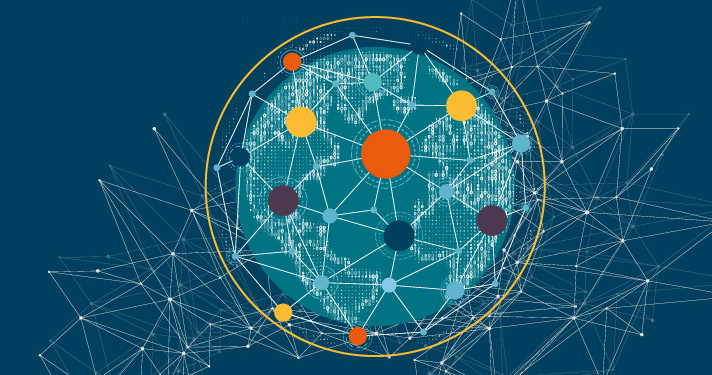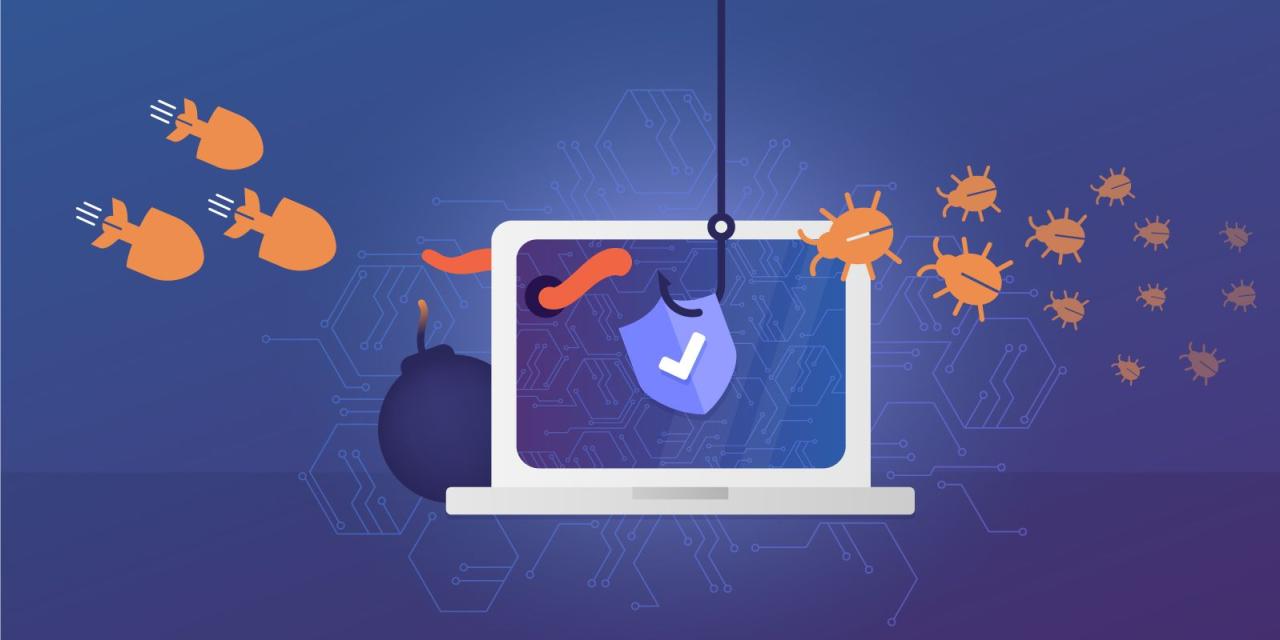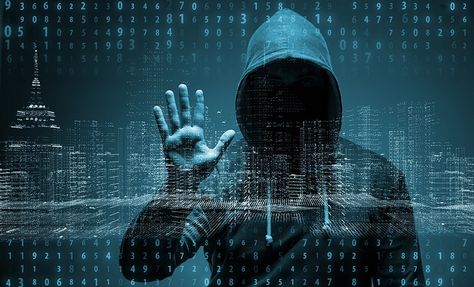The digital frontier is rapidly expanding, and at the forefront of this evolution lies the metaverse—a vast, immersive digital universe where virtual reality (VR), augmented reality (AR), and blockchain technologies converge. As millions of users and businesses venture into this new space, cybersecurity emerges as a critical concern. Cyber threats in the metaverse are not merely an extension of traditional online risks; they represent a complex, multifaceted challenge that demands innovative defenses and robust strategies. This article delves into the rise of cybersecurity threats in the metaverse, explores the unique vulnerabilities inherent in this new environment, and offers comprehensive insights into how individuals and organizations can protect themselves.
The metaverse is more than a buzzword—it is an evolving ecosystem that promises to revolutionize digital interaction. Originating from science fiction, the term now represents a fully immersive online environment where users can interact, socialize, and conduct business in real time. The metaverse is characterized by its integration of VR, AR, and mixed reality (MR), allowing users to experience digital worlds that mirror, enhance, or even transcend our physical reality.
Advancements in hardware and software, coupled with increased investments from tech giants, have accelerated the metaverse’s development. Today, virtual worlds are being used for entertainment, education, business meetings, and even virtual economies where digital assets, such as NFTs and cryptocurrencies, are traded. However, this rapid expansion has also attracted cybercriminals eager to exploit new vulnerabilities.
Cybersecurity in the Metaverse: New Challenges
As the metaverse grows, so does the sophistication of cyber threats targeting it. Unlike traditional internet platforms, the metaverse combines multiple layers of technology, making it a rich target for cyberattacks. Several factors contribute to the heightened risk:
- Complexity of Integration: The metaverse involves the seamless integration of diverse technologies such as VR, AR, IoT, blockchain, and artificial intelligence (AI). Each of these components can harbor unique vulnerabilities that may be exploited.
- Digital Identity and Privacy: In the metaverse, users interact through digital avatars and often share extensive personal information. The lack of robust identity verification and privacy measures can lead to identity theft and unauthorized data access.
- Virtual Economies: With digital assets gaining real-world value, the metaverse is an attractive playground for financial fraud, scams, and ransomware attacks targeting virtual wallets and NFT marketplaces.
- Anonymity and Decentralization: The inherent anonymity and decentralized nature of many metaverse platforms can facilitate cybercriminal activities, making it challenging to trace and mitigate attacks.
Common Cyber Threats in the Metaverse
As we venture deeper into the metaverse, it is crucial to recognize the specific cybersecurity threats that loom large in this new digital realm. Below are some of the most prevalent risks:
A. Identity Theft and Avatar Fraud
Digital identities in the metaverse are often represented by avatars. Cybercriminals may hack into accounts or manipulate digital profiles to impersonate users, leading to identity theft and fraudulent activities. This threat undermines trust and can have severe repercussions for personal and professional reputations.
B. Phishing and Social Engineering Attacks
Cyber attackers employ sophisticated social engineering techniques in the metaverse, leveraging the immersive and interactive nature of virtual environments. Phishing scams may take on new forms, such as deceptive VR interfaces or augmented reality overlays designed to trick users into divulging sensitive information.
C. Malware and Ransomware
Just as in the traditional digital space, malware and ransomware pose significant threats in the metaverse. Malicious software can infiltrate VR platforms, compromising user data or locking digital assets until a ransom is paid. The distributed nature of metaverse networks only complicates the process of tracking and neutralizing these threats.
D. Data Breaches and Privacy Violations
With vast amounts of personal and financial data being stored and transmitted in the metaverse, the risk of data breaches increases. Cybercriminals can exploit weaknesses in security protocols to access confidential information, resulting in privacy violations that can affect millions of users.
E. Fraud in Virtual Economies
The digital economy within the metaverse, which includes NFT marketplaces and cryptocurrency transactions, is highly susceptible to fraud. Cyber attackers might execute scams by manipulating smart contracts or exploiting vulnerabilities in blockchain implementations, leading to significant financial losses for investors.
F. Hacking of VR and AR Devices
The hardware that powers the metaverse—VR headsets, AR glasses, and other IoT devices—can be a point of vulnerability. Hackers may exploit software flaws or firmware weaknesses to gain unauthorized access, potentially using compromised devices as entry points to broader network systems.
G. Insider Threats
Not all cyber risks in the metaverse come from external actors. Insider threats, whether intentional or accidental, remain a concern. Employees or developers with privileged access to sensitive data or system controls can inadvertently introduce vulnerabilities or deliberately misuse their access.
H. Distributed Denial-of-Service (DDoS) Attacks
DDoS attacks, which overwhelm digital platforms with excessive traffic, are not confined to traditional websites. In the metaverse, such attacks can disrupt virtual events, hinder transactions, and compromise the overall user experience by rendering platforms inoperable.
I. Exploitation of Augmented Reality Applications
Augmented reality applications, which overlay digital information onto the physical world, are another target for cybercriminals. By exploiting vulnerabilities in AR software, attackers can inject malicious content, manipulate user perceptions, or capture sensitive data from unsuspecting users.
The Impact of Cyber Threats in the Metaverse
The repercussions of cyber threats in the metaverse are far-reaching, affecting not only individual users but also businesses and the broader digital economy.
A. Financial Losses
Cyberattacks can lead to substantial financial losses for both individuals and organizations. Fraudulent activities in virtual economies, ransomware attacks, and data breaches can result in significant monetary damage, undermining confidence in digital transactions.
B. Reputational Damage
A security breach in the metaverse can tarnish the reputation of companies and platforms, leading to a loss of trust among users. Once a breach occurs, recovering the lost credibility and regaining user confidence can be an arduous and prolonged process.
C. Legal and Regulatory Consequences
Organizations operating in the metaverse are subject to an evolving landscape of legal and regulatory requirements. Failure to protect user data and adhere to cybersecurity standards can lead to legal actions, fines, and increased scrutiny from regulatory bodies.
D. Disruption of Business Operations
Cyberattacks, particularly DDoS incidents and ransomware attacks, can disrupt business operations by halting transactions and impeding communication channels. For companies relying on the metaverse for business interactions, such disruptions can be particularly damaging.
E. Erosion of User Trust
User trust is the cornerstone of any digital platform. In the metaverse, where personal identity and financial assets are deeply intertwined, cybersecurity breaches can significantly erode user trust, hindering the widespread adoption of this emerging technology.
Advanced Technologies and Strategies for Mitigating Cyber Risks
Addressing the cybersecurity challenges of the metaverse requires a multi-layered approach that leverages advanced technologies and proactive strategies. Here are several key measures that can help mitigate these risks:
A. Blockchain Technology for Secure Transactions
Blockchain offers a decentralized and tamper-proof system for handling digital transactions and verifying identities. Its inherent security features can be harnessed to protect digital assets and ensure the integrity of virtual economies.
- A.1. Decentralized Identity Verification: Blockchain can help create secure digital identities, reducing the risk of identity theft and avatar fraud.
- A.2. Secure Smart Contracts: Implementing secure smart contracts can prevent fraudulent transactions and ensure that digital asset exchanges occur seamlessly.
- A.3. Immutable Record-Keeping: Blockchain’s immutable ledger can provide an unalterable history of transactions, helping to track and prevent cybercriminal activities.
B. Artificial Intelligence (AI) and Machine Learning (ML)
AI and ML are essential tools in detecting and countering cyber threats in real time. These technologies can analyze vast amounts of data, identify patterns, and predict potential attacks before they occur.
- B.1. Threat Detection and Response: AI-powered systems can monitor network activity continuously, identifying suspicious behaviors and triggering automated responses.
- B.2. Behavioral Analytics: ML algorithms can learn from user behavior patterns, helping to flag anomalies that may indicate a cyberattack.
- B.3. Reducing False Positives: AI systems can differentiate between legitimate activities and potential threats, reducing the number of false alarms and ensuring that security teams focus on genuine risks.
C. Enhanced Encryption and Multi-Factor Authentication
Strong encryption protocols and multi-factor authentication (MFA) are vital in securing data and verifying user identities in the metaverse.
- C.1. Data Encryption: Encrypting sensitive data ensures that even if unauthorized access occurs, the information remains unreadable and unusable.
- C.2. MFA Implementation: MFA adds an extra layer of security by requiring multiple forms of verification before granting access to critical systems and personal accounts.
- C.3. End-to-End Security: Combining encryption and MFA across all communication channels can significantly reduce the risk of cyber intrusions.
D. Regular Security Audits and Penetration Testing
Proactive security audits and penetration testing are crucial in identifying and addressing vulnerabilities before they can be exploited by cybercriminals.
- D.1. Continuous Vulnerability Assessment: Regular audits help identify weak points in the system, ensuring timely updates and patches.
- D.2. Simulated Cyberattacks: Penetration testing simulates real-world cyberattacks, providing insights into potential vulnerabilities and the effectiveness of existing defenses.
- D.3. Risk Management Frameworks: Implementing comprehensive risk management frameworks can help organizations prioritize security efforts and allocate resources efficiently.
E. User Education and Cybersecurity Awareness
One of the most effective ways to mitigate cyber threats is by educating users about the risks and safe practices within the metaverse.
- E.1. Training Programs: Regular cybersecurity training sessions can help users recognize phishing attempts, social engineering tactics, and other common threats.
- E.2. Awareness Campaigns: Informative campaigns can educate users on the importance of strong passwords, secure login practices, and the dangers of oversharing personal information.
- E.3. Community Engagement: Encouraging a culture of security within virtual communities can lead to peer-to-peer support and a collective vigilance against cyber threats.
The Role of Regulatory Frameworks and Industry Standards
As the metaverse continues to grow, regulatory bodies and industry standards play a crucial role in establishing a secure digital environment. Governments and international organizations are increasingly aware of the cybersecurity challenges posed by immersive digital spaces, and they are working to develop frameworks that ensure compliance and enhance user protection.
A. Government Regulations and Legal Compliance
- A.1. Data Protection Laws: Governments around the world are implementing stringent data protection laws that require companies to safeguard user data and notify authorities in the event of a breach.
- A.2. Cybersecurity Standards: Regulatory bodies are establishing cybersecurity standards that mandate regular security audits, risk assessments, and the implementation of advanced security measures.
- A.3. Cross-Border Cooperation: As cyber threats are not confined by national borders, international cooperation is essential for enforcing regulations and ensuring a unified response to cyberattacks.
B. Industry Collaboration and Best Practices
- B.1. Public-Private Partnerships: Collaboration between governments, private companies, and cybersecurity experts can lead to the development of innovative solutions tailored to the metaverse.
- B.2. Information Sharing: Establishing networks for sharing threat intelligence and best practices can help organizations stay ahead of emerging cyber threats.
- B.3. Standardization Efforts: Industry-wide standardization of security protocols, especially for emerging technologies like VR and AR, can create a more secure environment for all users.
Future Trends in Metaverse Cybersecurity
The evolution of the metaverse is set to bring about new challenges and opportunities in cybersecurity. As technology advances, so too will the methods employed by cybercriminals. Understanding these future trends is essential for staying one step ahead.
A. Quantum-Resistant Encryption
The advent of quantum computing poses both opportunities and threats for cybersecurity. Quantum-resistant encryption methods are being developed to safeguard digital communications against the formidable processing power of quantum machines.
- A.1. Preparing for Quantum Threats: Organizations must invest in research and development to create encryption techniques that can withstand quantum attacks.
- A.2. Transition Strategies: Developing strategies for a smooth transition from classical encryption to quantum-resistant methods is vital for maintaining long-term security.
B. Integration of Biometric Authentication
Biometric authentication—using fingerprints, facial recognition, or voice recognition—is gaining traction as a secure method of identity verification in the metaverse. Its integration can significantly reduce the risks associated with password-based systems.
- B.1. Advanced Biometric Systems: Future developments in biometric technology will offer even more precise and user-friendly security measures.
- B.2. Privacy Considerations: Balancing the benefits of biometric authentication with the need to protect user privacy will be a key challenge for developers and policymakers alike.
C. AI-Driven Cyber Defense
The use of AI in cybersecurity will continue to evolve, with systems becoming more adept at predicting, identifying, and neutralizing threats in real time.
- C.1. Enhanced Predictive Analytics: AI systems will increasingly use predictive analytics to forecast potential vulnerabilities and preempt cyberattacks.
- C.2. Adaptive Security Measures: Future AI-driven defense mechanisms will adapt dynamically to new threats, ensuring that security protocols remain effective against an ever-changing landscape.
D. Convergence with IoT and Smart Cities
The metaverse will likely converge with other emerging technologies, such as the Internet of Things (IoT) and smart city infrastructures. This integration will create new avenues for cyber threats but also open up opportunities for collaborative security solutions.
- D.1. Interconnected Systems: As digital and physical infrastructures merge, comprehensive security strategies that encompass both realms will be necessary.
- D.2. Unified Security Frameworks: Developing unified security frameworks that can protect interconnected systems across various domains will be critical for future resilience.
Best Practices for Securing the Metaverse
Given the complex nature of cybersecurity threats in the metaverse, adopting best practices is essential for safeguarding both users and digital assets. Below is a comprehensive list of recommended strategies:
A. Implement Strong Access Controls
- A.1. Principle of Least Privilege: Limit user access to only what is necessary for their role.
- A.2. Multi-Factor Authentication: Use MFA to add layers of security to user logins.
- A.3. Regular Access Reviews: Conduct periodic reviews of access permissions to ensure that outdated or unnecessary privileges are revoked.
B. Conduct Regular Security Audits
- B.1. Continuous Vulnerability Scanning: Regularly scan for vulnerabilities in the metaverse platform and associated technologies.
- B.2. Penetration Testing: Simulate cyberattacks to identify weaknesses before they can be exploited.
- B.3. Security Compliance Checks: Ensure that all systems comply with current cybersecurity regulations and best practices.
C. Educate Users and Build Awareness
- C.1. Comprehensive Training Programs: Provide ongoing cybersecurity education to all users.
- C.2. Awareness Campaigns: Launch campaigns to inform users about common threats and safe practices.
- C.3. Community Engagement: Foster a culture of security where users feel empowered to report suspicious activities.
D. Leverage Advanced Technologies
- D.1. AI and ML Integration: Utilize AI and ML for real-time threat detection and adaptive security responses.
- D.2. Blockchain Implementation: Secure digital transactions and identities using blockchain technology.
- D.3. Quantum-Resistant Solutions: Invest in research to develop encryption methods that can withstand future quantum computing threats.
E. Foster Industry Collaboration
- E.1. Public-Private Partnerships: Collaborate with industry experts, government agencies, and other stakeholders to enhance security.
- E.2. Information Sharing Networks: Participate in networks that facilitate the sharing of threat intelligence.
- E.3. Standardization Initiatives: Contribute to efforts aimed at standardizing cybersecurity protocols across metaverse platforms.
Conclusion
The metaverse represents an unprecedented leap forward in digital innovation, offering immersive experiences and transformative opportunities for both individuals and businesses. However, with great innovation comes great responsibility. As cyber threats continue to evolve and proliferate in this new digital frontier, robust cybersecurity measures are more critical than ever. From identity theft and phishing scams to ransomware and data breaches, the challenges are multifaceted and demand a proactive, technologically advanced response.
Organizations and users alike must invest in advanced cybersecurity technologies—such as blockchain, AI, and quantum-resistant encryption—and adhere to best practices, including regular security audits, user education, and the implementation of strict access controls. By fostering industry collaboration and supporting regulatory frameworks, the metaverse can evolve into a secure environment that balances innovation with protection.
In the face of rising cyber threats, the collective efforts of developers, cybersecurity experts, policymakers, and users will determine the resilience of the metaverse. As we move forward, continuous vigilance, adaptive security measures, and a commitment to robust digital practices will be essential in safeguarding our virtual futures.
Cybersecurity in the metaverse is not just a technical issue—it is a fundamental challenge that touches every aspect of our digital lives. As we continue to navigate this brave new world, the need for comprehensive, proactive security strategies has never been more apparent. The future of the metaverse depends on our ability to protect it from those who seek to exploit its vulnerabilities, ensuring that innovation and creativity can flourish in a safe, secure digital landscape.




